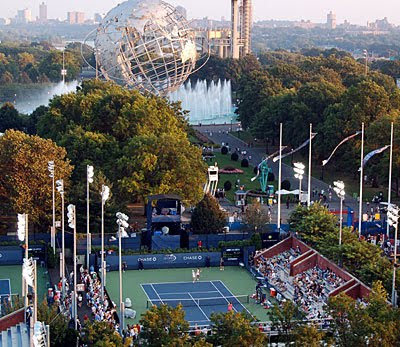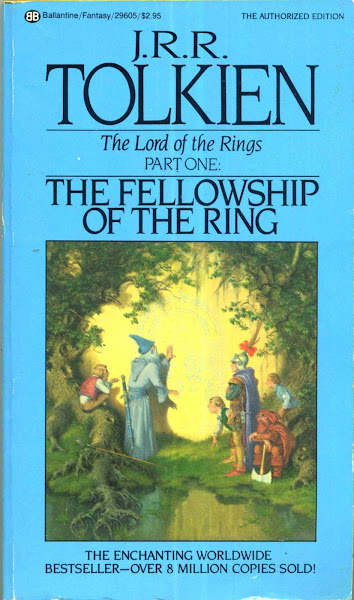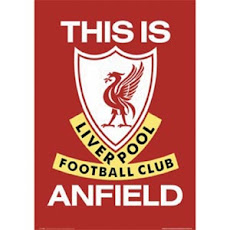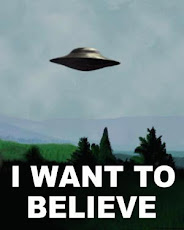Monday, May 31, 2010
Kobe Bryant and the Fellowship of the Ring
Kobe Bryant and the Fellowship of the Ring by rick olivares

Bleachers' Brew #211 He's Still Got Game
He’s Still Got Game
Old school? Aric del Rosario has been involved with the game of basketball for over five decades now. And he tells Rick Olivares that he’s still got game.
Aric del Rosario is a basketball junkie.
By all rights and purposes, he should stay home retired and become a couch potato. He’s earned it after all – two championships as a player for UST, four later as his alma mater’s coach, a bunch of titles as an assistant to Alaska in the PBA during the 1990’s, one as a benchmaster of the Pampanga Dragons, and a one-time stint as coach of the national team.
Except that he is entering his fifth decade of being involved in the game of basketball in various capacities – player, coach, and league commissioner of various alphabet soup leagues.
Maybe in his younger days he would brag about the championships he’s won. Maybe he won’t. Maybe it will take the prodding of liquor.
Except that he seems almost embarrassed that someone else is singing high praises of a resume few coaches have.
He still works seven days a week. He’s commissioner for the Fr. Martin Cup that is played four times a week. On the three other days? He is co-commissioner of the Fil Oil Invitational Tournament.
You think his wife is used to it?
In the den of his home he has two television sets. At night, they are oft switched on at the same time – one for the PBA games and another for the NBA.
His wife throws up her hands – “Maghapon ka na nasa Arena paguwi mo pa basketball pa rin!" If she needs to watch the latest tele-novela she can do so upstairs in their room.
He smirks. He no longer patrols the sidelines yelling, cussing, and gesticulating like he used to when his Glowing Goldies lorded it over the UAAP. Even then he looked like a grizzled veteran. Not a basketball player mind you. But like Mickey. The crusty old “Mickey” that was played by Burgess Meredith in Rocky.
But age is a state of mind. He isn’t one of those old dogs who cannot be taught new tricks. His stint as commissioner of the NCAA and Fil Oil has given him a different perspective on things. He isn’t ashamed to admit that he was also wrong back then. That at times, he was a pain. He understands the referees and officials and the work that needs to be done to keep the game safe and sound. He can appreciate the scientific approach to the game. The new breed of coaches with a different savvy. He observes and learns. But he’s still old school in many ways.
When he played for UST, he started at forward alongside Danny Florencio. His coach for two years was Fely Fajardo and during his last two years, Caloy Loyzaga. He played against Joe Lipa who starred for UP. And there was of course, “the Big J” – the UE Warriors’ Robert Jaworski who stymied him in his last few years as the Big Red Machine won seven straight titles.
The Warriors proved to be a thorn in his side. In his first year as coach of UST, he had a young spitfire of a guard in Alfredo “Pido” Jarencio. There was Bennett Palad, Julian Rabbi Tomacruz, Gido Babilonia, and Alfrancis Chua. They were stopped cold by the Warriors of Allan Caidic and Jerry Codinera.
The loss in the finals was painful and even if he would guide the Goldies to a four-peet a decade later, he still feels the pain for Jarencio et al.
He still feels pain when UST – now called the Growling Tigers – lose and people call for him to return to the gold and black’s sidelines.
Maybe he will. Maybe he won’t. But he knows it’s not his time anymore but even up to last year in 2009, he was coaching in the Liga Pilipinas. It’s the only thing he is really good at, he admits with a chuckle. If he stays home, the Kapampangan in him will cook and cook and he’d grow fat. He’s a little more round in the edges, a little more gray in the hair with lines in his face, but more or less, Coach Aric is still the same. “You should see my kids,” he challenged. “Ang tataba.”
He may have seen it all but in a room full of old warriors that includes another great – Ato Badolato. The old war stories fly thick. The youngsters who work in the tournament’s backroom seem unimpressed. But when the media come in – and most of them are hoop junkies too – his eyes light up and he talks. He dispenses old school wisdom and stories that cackle with mischievousness and basketball trivia.
Has there ever been an all-star line-up of coaches such as what they had in Alaska in the 90’s? There was Tim Cone, Chot Reyes, Joel Banal, and himself. Great times. Great stuff. Don’t think coach has gone sentimental and will get teary-eyed. Instead, he lets loose a cussword. Even after all these years, he is still in disbelief. Long removed from his playing days but on the other side of the court was his old nemesis Sonny Jaworski who was the heart and soul of Ginebra San Miguel. This time, his team, Alaska, turned the tables on Jaworski as they played many a spoiler’s role to Ginebra.
When someone asked if del Rosario would deign to coach for another school he is quick to answer. “Oo naman. Basta wag lang sa UAAP. Hindi ko kaya mag-coach laban sa aking alma mater. Buong pamilya ko diyan nagpunta. Hindi maaring walang sasama ang loob. Sa ibang liga okay lang.”
The Fil Oil Invitational will wrap up in two weeks. And two weeks after, the 86th edition of the NCAA will get underway where Del Rosario is once more commissioner. His wife throws up her hands but she understands. Her husband is in love with only two things – family and basketball.
Was it ever mentioned that Aric del Rosario is a basketball junkie?
Sunday, May 30, 2010
New kicks
On moving a Grand Slam event
I was reading about how French Open organizers are pondering a move of the tennis event away from Roland Garros, it’s home since 1923.
It seems that the event has outgrown its home and with residents and environmentalists challenging plans for improvements, organizers are wondering if the venue should be moved.
It isn’t going to be easy because for one, it’s in Paris. And two, the only other locations will take some driving time and aren’t ready to handle the influx of tourists and fans.
Of course, any plans to move the French Open away from Roland Garros will be met with a firestorm of protest. Personally, I think that organizers and residents should meet halfway. After all, should the French Open move then it’s the loss of the area. The only reason why the real estate value has jumped is because of the Grand Slam event. Let no one else kid you about that. Tourism is up because of the history of the tennis event.
It never is easy to move a popular sporting event or a team out of a venue that it has become synonymous with. But one of the things that I have learned that change is constant and good.
For the longest time, the Blue Eagle Gym was home to the Ateneo Blue Eagles. But when the Moro Lorenzo Sports Center was put up the team no longer practiced there. The facility at the far end of the campus was so much better and had the facilities the team needed.
I guess storied venues do go the way of the wrecking ball. There’s Chicago Stadium, the original Soldier Field, Boston Garden, and there’s Yankee Stadium to name a few. They moved to accommodate bigger crowds and to maximize their earnings. In the era of free agency with pricey contracts, moving to a bigger venue for higher profit is a no-brainer.
The Australian Open has changed venues seven times. Melbourne is the current home and it should remain there for quite some time. It was even held in New Zealand twice!
The US Tennis Open was once held at Forest Hills in Queens, New York. It was at the West Side Tennis Club to be more precise. Forest Hills is an upscale section of Queens. Kind of expensive if you ask me but with the right kind of snobbery for want of a better term.
When the US Open moved to nearby Flushing Meadows in 1978 (22 years ago) it was to a bigger facility. If there were concerns about getting there then it is easily accessible via subway, bus, or taxi. And moving also meant a change in surfaces. In Forest Hills, for the most part, tennis was played on grass. But I think in the last few years there they experimented with clay. But in Flushing Meadows, they make use of an artificial turf that makes for faster balls. Of course there were concerns and protests but look at the decision to move now -- it was the right thing to do.
The neighborhood has seen an improvement but continued immigration (from people who need a lesson in proper cleanliness) but it can on occasion get dirty. With Citi Field (and Shea Stadium before that) nearby it makes up Flushing Meadows-Corona Park. The area is popular with joggers, tourists (also because of the Unisphere that the Mall of Asia copied), and other sports enthusiasts.
The US Open is more boisterous than any of the other Grand Slam events. I know that some tennis players complain about the noise from passing airplanes that take off from JFK or LaGuardia. Maybe because it’s New York that's why it is noisier. It has that rock ‘n roll atmosphere that can pump up a player. When I think of Jimmy Connors comeback in the 1989 US Open that makes my hair stand up. I don’t think I’ve seen that before. He lost to – man, I am not sure now – Jim Courier or Michael Chang. But the place was rocking.
I’ve been fortunate enough to watch the US Tennis Open and work part time in the event (selling programs). I’ve always wanted to watch in Wimbledon, Roland Garros, and Melbourne. All I can take away from those venues and events is what I see on television.
Regarding changes in venues. I think that it’s okay because at the end of the day, it’s the people, the athletes, and the fans who make the venue what it is. They create the memories and the history. At the end of the day, it’s doing what is right for the sport. So the French Open... why not?
Saturday, May 29, 2010
This is what the World Cup is all about
No tragedy for the Celtics. Just a shot at banner #18.
Les 23 pour l'Afrique du Sud













Friday at the Fil Oil Invitational
Friday, May 28, 2010
Friday Stuff

Interesting reads from the latest issue of Time magazine:
- Facebook and how it is redefining privacy
- "Resumed Innocent" by Nathan Thornburgh on using DNA to prove that executed inmates were in fact innocent.

"I came here with high hopes and great pride to manage this team. Unfortunately I wasn't able to do what I wanted to do and I had differences from the beginning of the season. There were a lot of disagreements in the club. I asked for them to keep (Wesley) Sneijder and (Arjen) Robben, who were two very important players for me. I missed having a debate on sporting issues, with the coach included. As (former Real coach and current Spain boss) Vicente Del Bosque said, even the club shows no respect for the position of the coach, and they don't give them the authority internally or externally. Florentino's project is extraordinary but I think he's got it wrong. It hurt above all because they had already tied up a new coach which isn't ethical. I wouldn't have spoken about a team that already had a coach in place. It isn't very ethical, but he (Jose Mourinho) is a coach that has proven he is a winner in every team he has been with."
How soon is Neverland?

How soon is Neverland?
by rick olivares
In the movie Hook (starring Robin Williams and directed by Steven Spielberg), a sequel of sorts on the fairy tale of Peter Pan, the eternal kid is all grown up. Suddenly confronted with age and the problems that come along with it, he is advised to retreat back to his “happy thought” (being a father) in order to relearn magic and to fly.
A rejuvenated Peter Pan goes on to vanquish the returning Captain Hook, save his family, and finally bring back peace to Neverland. And as fairy tales oft end, they all live happily ever after.
Neverland for Jeffrey Solis is the memory of Melbourne, Australia in December of 2008 and the memory burns fiercely in his mind.
For seven days in December, Solis was shown a vision of hope. During that time, he was a part of the first Philippine Homeless World Cup Team that competed and finished 44th in a 48-country field. The competition features a four-a-side mixed lineup of players at least 16 years of age. In the tourney, teams compete in two 14-minute halves in a small-sized court with a dimension of 22x16 meters. It’s like futsal only in a faster and more exciting setting.
Team Philippines didn’t win much, taking only 4 of their 13 matches but at the end of the competition, but in the end, they came away like cup winners.
Bill Shaw is from East Jordan, Michigan, but he found his calling in the Philippines as the Executive Director for Urban Opportunities for Change Foundation Inc. and the organizer for the local Homeless World Cup team. Said Shaw, “What we’re trying to do is get kids off the streets. Help them get an education, and look for opportunities for them after the competition. One of our efforts is selling a street magazine called “The Jeepney” which is all about issues of poverty. For their efforts, the kids get a percentage of the sales. Our mission is not just for the homeless but also those recovering from substance and alcohol abuse and the poor. The HWC is a home for the homeless and the disenfranchised.”
Talk about opportunity. For the entire Team Philippines, the Homeless World Cup was an eye opener.

Solis was surprised by how different, how clean Melbourne was. He never dreamed about going to another country because such a thought wasn’t even in the realm of possibility. The only time he began to earnestly dream about it when the team began its earnest preparations for the tournament. He rode on an airplane, made new friends, ate different food, and for the first time in his life, felt like a different person. The things the fortunate take for granted were a wholly new and intoxicating experience for Solis and his teammates. But more than the experience and the medals that were proof of their participation in Melbourne, they were shown a glimpse of hope.
He hated to come home. It was an uncertain future after all. But the team organizers did their best to help them by giving them work, shelter, clothing, and allowances.
Jeff Solis knows the streets of Manila so well. Abandoned by his mother years ago, he had to fend for himself by begging, working as a jeepney barker, and sniffing rugby when he wanted all his problems to go away. Picked up in the stratosphere half naked by the Manila Police, he was brought to the Tuloy sa Don Bosco Street Children Village in Muntinlupa where half the HWC team comes from (the other half hails from the Nayon ng Kabataan of the Department of Social Welfare and Development in Mandaluyong City). There he found a home, religion, an education, and football.
Excited about the prospect of going to Australia and representing the country, he was informed that he needed his parents’ signature for him to get his passport to Australia. After much looking, his mother surfaced one day. She merely said “hi” to her long-lost son, signed the papers, and disappeared again. Just when Jeff is on the rebound, his old life sneaks in a sucker punch to the gut that leaves him in tears.
After Melbourne, coming home was a jarring reality check.
Along with his Homeless World Cup teammates Jay-R de Jesus and Kevin Prix Logioy, the three finished a vocational course at Tuloy sa Don Bosco before they moved out to find their place in the world.
Jay-R helps teach football at Sisters of Mary Boystown in Silang, Cavite, while Kevin works in a restaurant. Jeffrey is now with former national player Rudy del Rosario at the Art of Playing Football School in Sun Valley, Parañaque. The money the three youngsters collectively make isn’t much but they get by. They rent a small room in United Parañaque where they each have a mattress and a pillow to lie down on and a couple of electric fans to beat the heat in this sizzling summer.
Education and sports. They are considered as the great equalizers in life. To be so near yet so far.
Jeffrey was offered a football scholarship at the Polytechnic University of the Philippines but it was held back because he had only finished a vocational course and did not complete his high school education. The setback upset Solis who admits that it contributes to his unhappiness. He has no idea on what to do although del Rosario is trying to find a way to help him finish his education and get a diploma. Solis knows his knowledge about football is only so much and it will only give him so much work.
Everyday he wages a battle in his mind to revert back to the street life that he once lived or to continue with only a sliver of hope to light his way. That is why he constantly retreats to those seven days in Melbourne. When he does, he feels the tears streak down his cheek.
“Ayoko na ng buhay na ganito.” he said meekly as he turned away apparently ashamed that he has let someone glimpse him in all his vulnerability.
“Sabi nila sa football dapat hindi mag-give up dahil lagging mayroon bukas at isa pang laro,” he suddenly chimed wanting to explain himself. “Kailangan lang kumapit sa paniniwala na ‘yon.”
Jeffrey Solis is hoping and working for a happy ending.
Post script: The other members of the first Philippine team to the Homeless World Cup include Kevin Prix Logioy who now works at Henlin, Ricky Elequio who works at Amici Restaurant, Nina Verzosa and Rondolf Longgakit still both live at Nayon ng Kabataan where they are finishing up their secondary education. Russel Jacinto worked in a Chinese restaurant before returning to her native Agusan del Sur.
Urban Opportunities for Change Foundation was founded by William and Deborah Shaw in November 2007 in order to call attention and find solutions to the issues of homelessness and poverty. Through participation in the Homeless World Cup, they hope to provide their players with a positive life changing experience that will help them continue their education and find steady employment through its corporate sponsors or through football. Even after their participation in the Homeless World Cup, the Shaws know their work is only beginning as they look for ways to help their wards. Obviously, it isn't easy. While all seven of the first team are employed or back in school, the Shaws constantly have to work and guide them.

Yep, it is in him.
Thursday, May 27, 2010
What it is!
Is Jose Mourinho made for Madrid?
Is Jose Mourinho made for Madrid?
By Rick Olivares
An unprecedented era of glory in Madrid? Or another one, an expensive special one who will bite the dust after one season?
Since 1999, Real Madrid CF has had 10 managers. That’s 10 in a decade or roughly one every year. Yet during the 2004-05 season, they went through three managers – Jose Antonio Camacho, Mariano Garcia Remon, and Vanderlei Luxemburgo.
Among the 10, three won La Liga titles – Vicente del Bosque, Fabio Capello, and Bernd Schuster – with the former being the most successful in his four-year stay. Capello and Schuster were replaced a year after they won and was not given a chance to defend their title. And ironically, Capello has twice coached the club for a year and each time, he won the domestic championship and each time he was let go because his side played Italian-style defensive football; far from the attacking flair that is desired in the Santiago de Bernabeu Stadium.
Chilean manager Manuel Pellegrini was just let go after one year with Los Merengues. His side, filled with expensive superstars like Cristiano Ronaldo, Kaka, Karim Benzema, and Xabi Alonso did not win the La Liga. Their loss to eventual titlists FC Barcelona the other month being the difference in the title race that came down to the final game of the season on points.
Incidentally, Pellegrini won 75% of his team’s matches, the best ever in Real Madrid history.
But a second place finish with its highest points total ever (Barcelona, back-to-back winners also had its highest points total this season), a roundof-16 exit in the Champions League and a dismal upset in the Copa del Ray led to the manager’s dismissal. And the greedy fat cats led by club President Florentino Perez who spent enough money to pay for several countries’ debts with their Galactico II project deemed the season a failure.
Maybe it is. Maybe it isn’t.
How can a team win when every year there is a change in the system and style of play? The players can always sabotage the manager if they do not like him knowing that the club officials hold him on a short leash?
And now perhaps this club’s biggest signing-to-be isn’t some football sensation but a special one – the arrogant Jose Mourinho who comes with an ego the size of the Eiffel Tower. Mourinho, fresh from a Treble with Inter Milan, will come in with unprecedented powers where even if he doesn’t win the Liga cannot be let go. Mourinho who demands the spotlight and center stage. Mourinho who makes Liverpool’s Rafael Benitez sound like an annoying minnow. Why not? He has talked the talk and walked the walk.
While at the San Siro where he turned AC Milan into second-rate co-tenants, he would openly flirt with the majesty of Madrid; of returning the club to its former glory. His quotes all but condemned Pellegrini into a top-or-duplicate-Barcelona’s-treble-feat situation. But then again, maybe not.
After all, Capello and Shuster piped the Catalans yet were dismissed after a year.
How Mourinho challenges Perez will be of great interest seeing as to how he did the same with Chelsea owner Roman Abramovich. But he is no longer special in Stamford Bridge since the Blues won the Premiership and FA Cup this season under Carlo Ancelotti. But make no mistake, Mourinho’s legend grows. He’s won with Porto, Chelsea, and Inter Milan. He is the latest version of Fabio Capello who has won with every club he’s been.
Capello can only dwarf him if he leads England to the World Cup Finals in Johannesburg this July. He will be knighted and take Wayne Rooney’s place in the recent Nike advert “Write the Future” where the Manchester United forward is given a glimpse of glory or slow death pending the outcome of the World Cup.
But Real Madrid… is it worth it? They have high hopes now after they shamelessly cast aside Pellegrini. After all, they have just made a play for the biggest Galactico of them all.
-------------
This appears in the May 28, 2010 edition of the Business Mirror.
Wednesday, May 26, 2010
Tuesday, May 25, 2010
Season 7 VLeague winners
Bloodied, beaten, and bewildered
What am I getting into? Well, it could be nothing. But then again…
In Game 1 of the Western Conference second round playoffs of 2007, Phoenix point guard Steve Nash sustained a gash on his nose following a collision with San Antonio’s Tony Parker. The Spurs won 111-106.
But Phoenix won the next game 101-81.
In Game 4 of that same series, Nash was hip checked by the Spurs Robert Horry that precipitated a near brawl. Horry was ejected and the Suns won 104-98 to level the series at two-games apiece.
But San Antonio won the next game and the Game 6 clincher.
In Game 3 of the 2010 Western Conference finals against the LA Lakers, the Suns were fighting for their playoff lives and won 118-109. But Nash broke his nose following a collision with the Lakers’ Derek Fisher.

Am just wondering here, when the Suns win after a Nash “injury” does it mean that they will lose the next game? Is there a pattern here or is this nothing? We’re going to find out in Game 4.


















